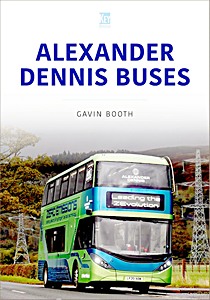120 Years of Dennis Buses
This book meticulously traces the evolution of Dennis Brothers, originating in the 1890s when John Dennis transitioned from crafting bicycles in Devon to building motor vehicles in Guildford by 1901.
The company's early repertoire included cars, vans, fire engines, and buses. Although car production ceased in 1913, the focus on larger vehicles flourished post-World War I, expanding the company's reach across the UK and various overseas territories.
In 1972, Dennis Brothers was acquired by the Hestair Group, and after several ownership changes, a consortium led by Alexander Dennis secured ownership in 2004. Noteworthy for its diverse range, Dennis has emerged as the largest UK manufacturer of passenger transport vehicles.
The book meticulously captures this developmental journey, accompanied by a selection of previously unpublished photographs, providing a comprehensive insight into the legacy of Dennis buses.
Caractéristiques
| Auteur : | Keith A. Jenkinson |
|---|---|
| Présentation : | 96 pages, 23.5 x 16.5 x 1.3 cm, broché |
| Illustration : | 180 photos en N&B et couleurs |
| Editeur : | Amberley Publishing (GB, 2023) |
| ISBN : | 9781445666549 |

120 Years of Dennis Buses
Langue : anglais
Disponible sur Amazon - paiement sécurisé et livraison rapide
Acheter sur Amazon FRAcheter sur Amazon BE
Acheter sur Amazon CA










